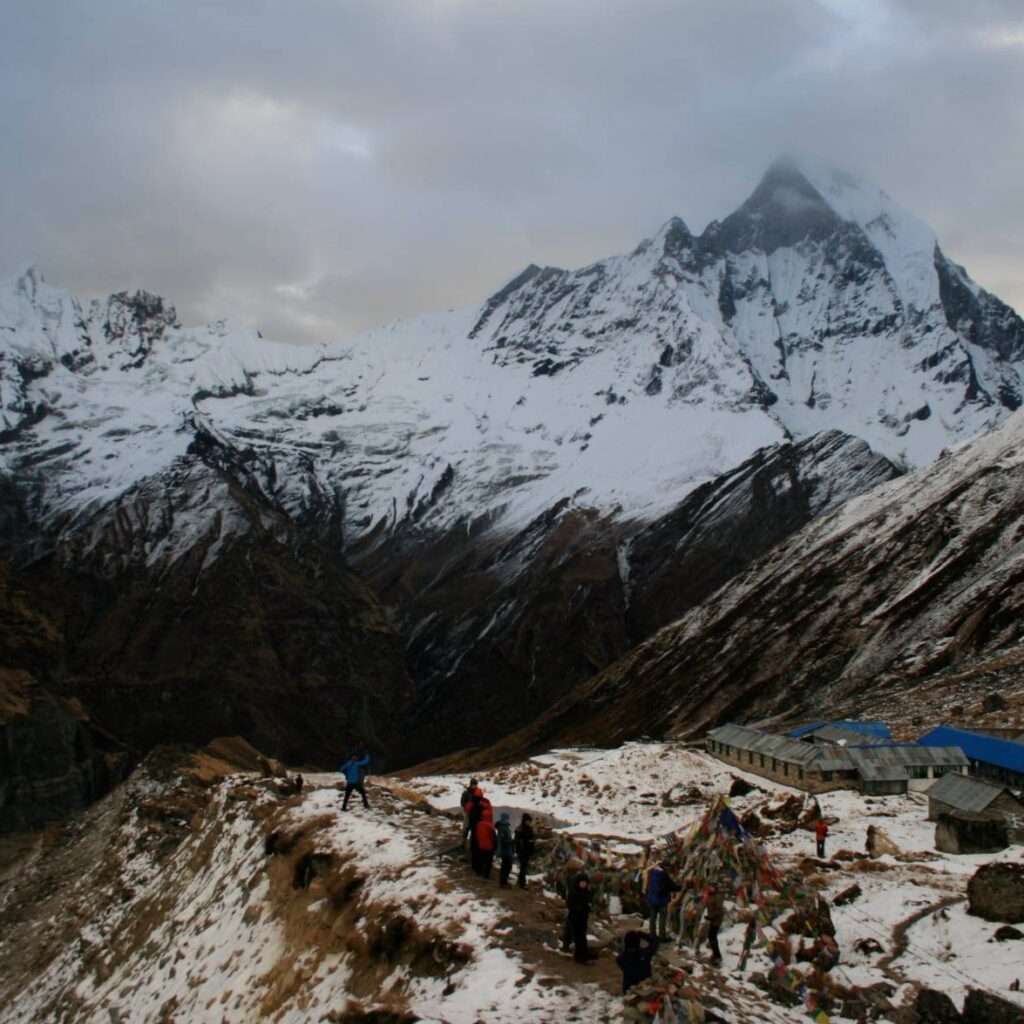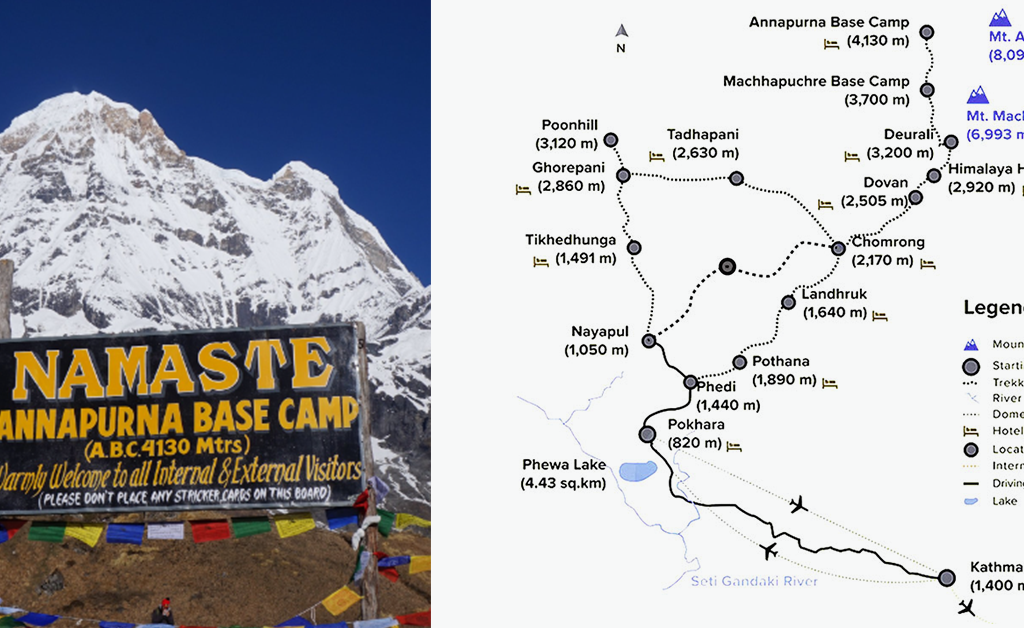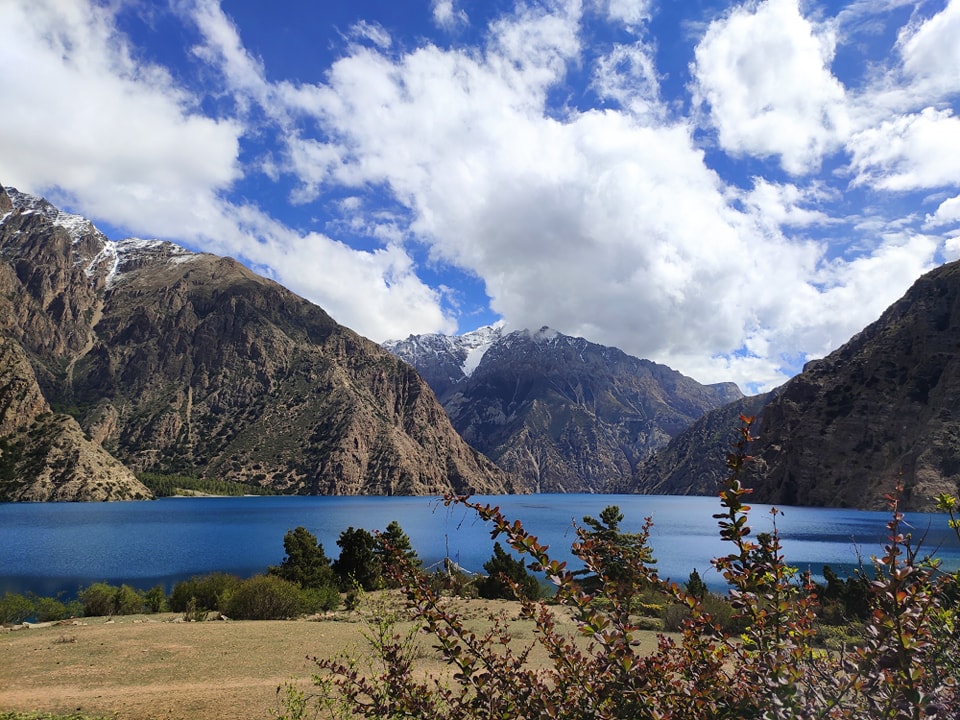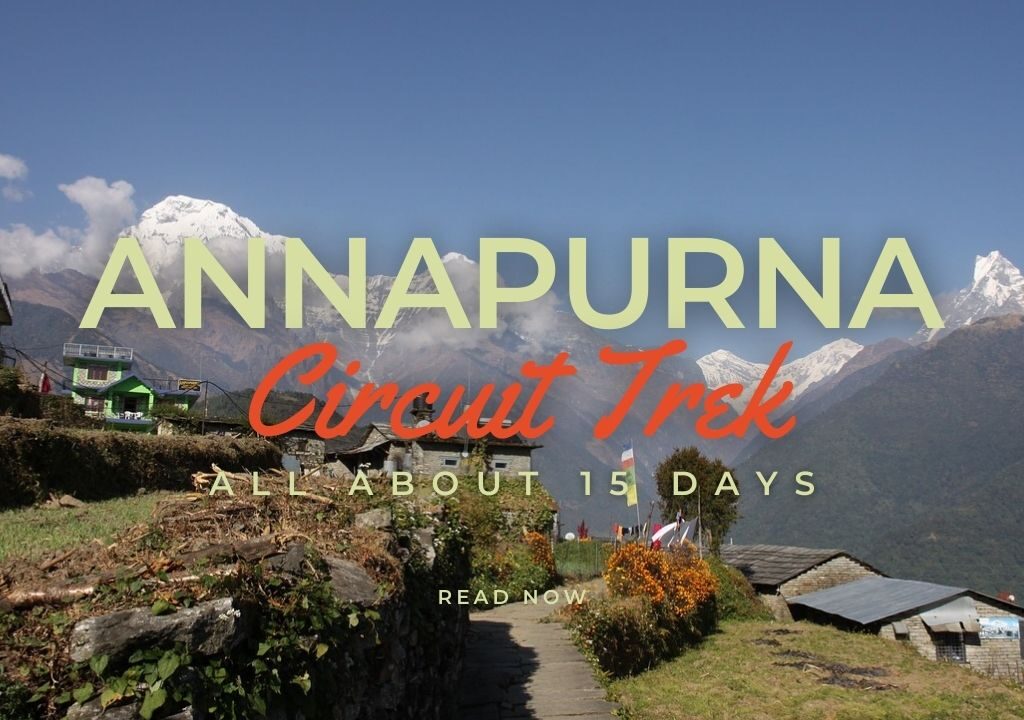Introduction
Picture this: You’re standing at an elevation of 4,130 meters, enveloped by the crisp mountain air, with the majestic Himalayan peaks towering before your very eyes. This is the Annapurna Base Camp, a celestial amphitheater of snow and ice, where the temperature swings between the sun’s warm glow by day and the chill of the high-altitude night. As you breathe in the thin air, the landscape seems to pulsate with life, echoing the rhythm of your heartbeat and the profound sense of awe filling your soul.
Welcome to our Epic 10-Day Annapurna Base Camp Trek Experience, your ultimate guide to embracing the chill, battling the altitude, and immersing yourself in the breathtaking beauty of Nepal’s most famed trek. Each step, each breath, and each heartbeat on this journey will carry you in the direction of the indomitable spirit of the Himalayas, reworking you in methods you by no means concept viable. Buckle up for the journey of a lifetime.

The Ultimate Guide to Annapurna Base Camp Trek: Altitude, Distance, Duration, Difficulty, Gear, Permits, and Weather
Here are Altitude, Distance, Duration, Difficulty, Gear, Permits, and Weather about annapurna base camp-
Conquering Altitude: The Peaks and Valleys of the Annapurna Base Camp Trek
The Annapurna Base Camp sits at an altitude of 4,130 meters (13,550 feet). The trek will take you through various altitudes, starting from Nayapul (approximately 1,070 meters) to the highest point at the base camp itself. It’s crucial to understand the impacts of altitude and how to manage altitude sickness.
Journey through the Miles: Understanding the Distance of the Annapurna Base Camp Trek
The total distance of the Annapurna Base Camp Trek is around 110 kilometers (68.35 miles). However, the exact distance can be different depending on the exact path you taken. The usual route begins and ends at Nayapul, near Pokhara.
Counting the Days: The Duration of the Annapurna Base Camp Trek
The duration of the trek can different based on your fitness level, weather conditions, health conditions and the pace at which you choose to go. On average, the trek is completed in 7 to 12 days. This includes acclimatization days to help your body adjust to the altitude.
Embrace the Challenge: The Difficulty Level of the Annapurna Base Camp Trek
The Annapurna Base Camp Trek is classified as moderate in terms of difficulty. you don’t need any technical climbing skills, but it does demand a reasonable level of physical fitness. The trails can be steep and rocky, and the excessive altitude can pose demanding situations, specially for those who aren’t used to it.
Gear Up: Essential Equipment for the Annapurna Base Camp Trek
Proper trekking gear is a must for the Annapurna Base Camp Trek. This includes sturdy trekking boots, warm clothing (the temperatures can drop below freezing at night), a good quality sleeping bag, a rainproof jacket, water purification supplies, a first aid kit, and energy-rich snacks. A hat, sunglasses, sunscreen, and a sturdy water bottle are also recommended.
Staying Legal and Safe: Permits and Safety Measures for the Annapurna Base Camp Trek
You will need two permits for the Annapurna Base Camp Trek – the TIMS card (Trekkers’ Information Management System) and the Annapurna Conservation Area Permit (ACAP). Always remember to trek safely, stick to the trail, and follow the advice of local guides. It’s better to lease a guide or go with an skilled group in case you’re now not acquainted with excessive-altitude hiking.
Reading the Skies: Weather Patterns for the Annapurna Base Camp Trek
The weather in the Annapurna region varies notably depending on the season. The put up-monsoon autumn (September-November) and pre-monsoon spring (March-May) are considered the first-rate instances to trek. During these periods, the weather is commonly strong, and the visibility is good. The winter months (December-February) may be extraordinarily cold with heavy snowfall, and the monsoon season (June-August) brings heavy rain and potential for landslides, making trekking greater tough.
Always remember to respect the environment and local cultures during your trek. Preparation is key to enjoying and completing the Annapurna Base Camp Trek safely and successfully.
Respecting the Journey: An Ode to the Environment and Local Cultures of the Annapurna Region
10-day itinerary for the Annapurna Base Camp Trek
Day 1: Kathmandu to Pokhara
Arrive in Kathmandu and travel to Pokhara either by a 6-7 hour bus journey or a short 25-minute flight. Spend the day exploring the beautiful lakeside city.
Day 2: Pokhara to Nayapul to Tikhedhunga
Drive from Pokhara to Nayapul (1-2 hours). Start the trek from Nayapul to Tikhedhunga (1,570m), approximately 4-5 hours of hiking.
Day 3: Tikhedhunga to Ghorepani
Trek from Tikhedhunga to Ghorepani (2,840m), which is about 7-8 hours of hiking. This is one of the hardest days with a lot of stairs.
Day 4: Ghorepani to Poon Hill to Tadapani
Early morning hike up to Poon Hill (3,210m) to catch the sunrise over the Himalayas. Return to Ghorepani for breakfast, then trek to Tadapani (2,610m), which is about 6-7 hours in total.
Day 5: Tadapani to Chhomrong
Trek from Tadapani to Chhomrong (2,170m), around 5-6 hours of walking. Enjoy the stunning views of Annapurna South and Machhapuchhre along the way.
Day 6: Chhomrong to Deurali
Trek from Chhomrong to Deurali (3,230m), which will take about 7-8 hours. Pass through bamboo forests and reach higher and more rugged terrain.
Day 7: Deurali to Annapurna Base Camp
Trek from Deurali to Annapurna Base Camp (4,130m), a 5-6 hour journey. Here, you will be surrounded by a stunning panorama of the Himalayan peaks.
Day 8: Annapurna Base Camp to Bamboo
After witnessing the sunrise over the peaks, descend from Annapurna Base Camp to Bamboo (2,340m), which is around 6-7 hours of walking.
Day 9: Bamboo to Jhinu Danda
Trek from Bamboo to Jhinu Danda (1,780m), approximately 6 hours. Take a relaxing dip in the hot springs here.
Day 10: Jhinu Danda to Nayapul to Pokhara
On your final day, trek from Jhinu Danda to Nayapul (about 6 hours), then drive back to Pokhara.
This itinerary is flexible and can be adjusted based on your pace, weather conditions, and any unforeseen circumstances. It’s also important to note that there should be room for extra acclimatization days if needed. Always listen to your body and take it slow to avoid altitude sickness.
map of the Annapurna Base Camp Trek

- Kathmandu to Pokhara: This is usually the starting point of the trek, where trekkers travel from Kathmandu to Pokhara by bus or plane.
- Pokhara to Nayapul: A short drive (1-2 hours) from Pokhara takes you to Nayapul, the starting point of the trek.
- Nayapul to Tikhedhunga: The trek officially begins at Nayapul, ascending to Tikhedhunga on the first day.
- Tikhedhunga to Ghorepani: Trekkers ascend steep stairs to Ulleri and continue through beautiful rhododendron forests to Ghorepani.
- Ghorepani to Poon Hill to Tadapani: An early morning hike to Poon Hill is common to catch the sunrise, followed by a trek down to Tadapani.
- Tadapani to Chhomrong: The trail descends through forests to Kimrong Khola, climbs again to Chere Danda, and then descends to Chhomrong.
- Chhomrong to Dovan/Deurali: Trekkers descend to Chhomrong Khola and then ascend to Khuldighar. The trail then descends through forests to Dovan or Deurali.
- Dovan/Deurali to Annapurna Base Camp: The trail continues into the heart of the Sanctuary to the Annapurna Base Camp. The trail can pass through either Machhapuchhre Base Camp (MBC) or the village of Deurali.
- Annapurna Base Camp to Bamboo: Trekkers typically spend a night at the base camp and then start their descent, reaching as far as Bamboo on the next day.
- Bamboo to Jhinu Danda: The return trail goes back to Chhomrong and then descends to Jhinu Danda.
- Jhinu Danda to Nayapul and back to Pokhara: The final leg of the trek leads back to Nayapul, and from there, a drive back to Pokhara.
Please consult a reliable trekking map or guide for a visual representation and detailed trail description. It’s also advised to take a local guide or join a guided tour for safety and navigation purposes.
Experiences and map of the Annapurna Base Camp Trek
Navigating the dramatic landscapes of the Annapurna Base Camp Trek is an experience of a lifetime. Below, we share some insights and tips to make your trek smoother and more enjoyable:
Diverse landscapes
From lush rhododendron forests and terraced farm fields to alpine landscapes, and breathtaking mountain vistas, the diversity of the trek is a joy for nature enthusiasts and photographers alike.
Local cultures and traditions
Take the time to interact with locals in teahouses and villages along the trail. This enriches the trekking experience and provides an understanding of the local Gurung and Magar cultures.
Acclimatization
To prevent altitude sickness, it’s essential to pace yourself and take acclimatization days during the trek. If you feel unwell, do not ascend further until symptoms subside.
Stay Hydrated and nourished
Drinking lot of water and maintaining a balanced diet during the trek can greatly aid acclimatization and keep your energy. Try local food like Dal Bhat, a traditional Nepalese meal that is rich in carbohydrates and protein.
Pack wisely
Pack light but make sure you have all essentials like warm clothing, rain gear, trekking boots, water purification tablets, and snacks. It’s also beneficial to pack some basic medicines for headache, diarrhea, and other common illnesses.
Respect the environment
Follow the principle of ‘Leave No Trace’. Do not litter, and respect the local flora and fauna.
Hire a local guide
While it’s possible to do the trek independently, having a local guide can be immensely helpful. They not only know the route well but also the local language, culture, and can help in case of emergencies.
Be prepared for unexpected weather changes
Weather in the Himalayas can be unpredictable. Pack for all weather conditions and be prepared for sudden changes.
Enjoy the journey
Lastly, remember that the trek is not just about reaching the base camp. Take the time to enjoy the journey itself – the views, the people, the solitude, and the unique experiences along the way.
Remember, preparation and respect for the journey are fundamental for a successful and enjoyable Annapurna Base Camp Trek. Happy trekking!
Immersing in Local Culture and History During the Annapurna Base Camp Trek
The Annapurna vicinity, home to the Annapurna Base Camp Trek, is rich in neighborhood lifestyle, tradition, and history. This enriches the hiking revel in as you navigate thru various landscapes and go paths with vibrant ethnic groups. Here’s a glimpse into the nearby lifestyle and records you will come upon in the course of your journey:

Ethnic Communities
The Annapurna location is predominantly inhabited through the Gurung and Magar communities, every with their own specific traditions, customs, and dialects. You’ll have a threat to study their every day life, fairs, and conventional apparel as you skip via the villages.
Religion and Spirituality
Buddhism and Hinduism are the mostly found religions in the region. You’ll encounter various monasteries, chortens (Buddhist shrines), and Hindu temples along the trek. Prayer flags fluttering in the wind, a common sight, represent the spiritual aspect of the local people.
Architecture
Traditional houses in the Annapurna region reflect the local culture and the influence of the harsh weather conditions. Built using local materials like stone and wood, these houses are typically multi-storied, with the livestock on the ground floor to provide heat.
Local Cuisine
Food is an extral part of the culture in the Annapurna region. Dal Bhat, a traditional meal consisting of lentil soup (dal), rice (bhat), and accompanying curried vegetables or meat, is a staple. You’ll also get to try other local delicacies like gundruk (fermented leafy greens), dhindo (a traditional porridge-like dish), and Tibetan-style momos (dumplings).
Handicrafts
The local communities are skilled in traditional handicrafts. Woolen carpets, traditional knives (khukuri), wooden crafts, and intricate jewelry are some examples. Purchasing these can support the local economy and serve as unique souvenirs.
History
The trails you walk on have been used for centuries for trade between Nepal and Tibet. The influence of Tibetan Buddhism in the region also speaks to this historical connection. The conservation efforts in the area have their history too, with the establishment of the Annapurna Conservation Area in 1986, the first of its kind in Nepal.
Planning Your Annapurna Base Camp Trek: When to Go, How to Get There, Accommodation, Food, Health, and Safety
Best Time to Go Annapurna Base Camp Trek
The best instances to embark on the Annapurna Base Camp Trek are for the duration of the put up-monsoon autumn (September-November) and pre-monsoon spring (March-May). During those intervals, the climate is usually stable, and visibility is tremendous. However, do word that those also are the peak seasons for hiking and may be crowded.
How to Get Annapurna Base Camp Trek
The trek commonly starts from Pokhara, a metropolis approximately 200 km west of Kathmandu. You can get to Pokhara from Kathmandu via bus (6-7 hours), or with the aid of a faster yet more highly-priced flight (round 30 minutes). From Pokhara, a short force takes you to Nayapul, the usual starting point of the trek.
Where to Stay in Annapurna Base Camp Trek
Along the trek, you’ll locate teahouses inside the villages that provide basic lodging and food. Rooms are usually on a twin-sharing foundation with shared bathrooms. As you get better, the centers come to be extra simple. It’s a great concept to hold a napping bag for added warm temperature.
What to Eat during Annapurna Base Camp Trek
Teahouses along the trek serve both Nepali and western dishes. The local dish, Dal Bhat, is a good option as it is freshly prepared and provides the energy needed for the trek. It’s essential to stay hydrated and avoid alcohol as it can exacerbate the symptoms of altitude sickness.
Health Precautions for Annapurna Base Camp Trek
Before the trek, ensure you are in good health and have a reasonable level of fitness. Acclimatize properly to prevent altitude sickness – don’t rush your ascent, hydrate well, and rest if you feel unwell. It’s advisable to carry a basic first aid kit and medications for common illnesses like diarrhea, cold, and headaches.

Safety Precautions for Annapurna Base Camp Trek
Always stick to the marked trail and avoid trekking alone, especially if you are unfamiliar with the terrain. It’s recommended to hire a guide or porter who knows the region well. Ensure you have the necessary trekking permits – the TIMS card and Annapurna Conservation Area Permit. Keep emergency contact numbers handy and inform someone reliable about your trekking plan and schedule.
Remember, preparation is key to enjoy and successfully complete the Annapurna Base Camp Trek. Happy trekking!
if you any question related annapurna base camp trek and other nepal trek please comment us. thank you welcome to Nepal





cost of this trek